Can anyone tell me which are the most used and efficient open-source chatbots in the healthcare industry?
submitted by /u/brijeshlakhani834
[link] [comments]
Can anyone tell me which are the most used and efficient open-source chatbots in the healthcare industry?
submitted by /u/brijeshlakhani834
[link] [comments]
In honour of International Women’s Day, the team at Noodle Factory would like to shed light on female chatbots in the male-dominated technology and AI space
Within the last decade, we’ve witnessed the creation of many female characters as virtual assistants, including Amazon’s Alexa and Microsoft Cortana, as well as feminine voices like Google Assistant and Apple Siri.
According to Brookings, approximately 92.4% of America’s smartphone assistants market share which includes Siri, Alexa, Cortana, and Google Assistant, use female-sounding voices. Although the virtual assistants have since been updated to offer male-sounding voice options, they were launched with a female-sounding voice which has remained the norm.
Have you ever wondered why this is the case? A common argument is that AI chatbots play roles that are commonly filled by women. Unsurprisingly, this is due to the gender stereotypes seen in real-life and the fact that there are more male developers than female ones.
![]()
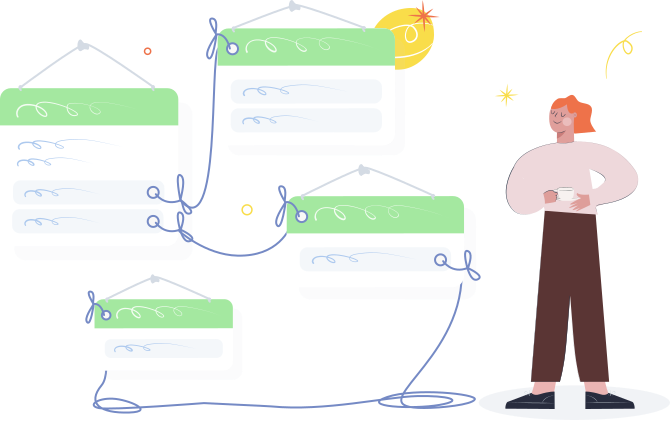
Live chat plays a crucial role in offering high-quality customer support. By instantly interacting with customers and quickly answering their questions, you can ensure that they have the best possible experience with your organization.
In fact, live chat also drives sales conversations. Studies have shown that live chat is responsible for over 30% of sales conversions.
Despite this, some businesses still hesitate to use a live chat solution in their sales process because they find live chat complicated. If you are one of these hesitant businesses, stay tuned to see what you’re missing out on and learn how to get started with ease.
In this post, we will discuss how live chat bridges the gap between traditional customer service and customer expectations while helping brands achieve more sales. Let’s begin.

You may be surprised to know that more than 92% of customers prefer live chat to other communication channels like email or phone calls. Here’s why:
Live chat provides customers with quick, personalized assistance and gets rid of the only thing they hate the most — waiting for replies.
In fact, the easy-breezy and user-friendly experience of live chat is the reason why according to a study by American data & analytics firm JD Power:
According to the ATG Global Consumer Trend study, 90% of customers believe that live chat is very helpful to them during online shopping. It provides them with much-needed assistance when they are confused about products and their features. As a result, they can buy products much faster without any unnecessary hassle.
Live chat also improves customer satisfaction by quickly answering questions in a personalized manner. Hence, people are more inclined to buy products, and sales conversions improve.
1. How Chatbots and Email Marketing Integration Can Help Your Business
Most customers who use live chat on a company’s website are either about to buy a product or in the process of buying one.
Communicating with your customers is crucial at this stage. They have a lot of questions. Having these questions answered during a live chat can increase their chances of buying your products. As Neil Patel says, this simple act of answering customer questions can make the difference between a sale and a bounce.
Here are some interesting findings from SoftwareAdvice to help you understand how live chat can help customers make quick buying decisions:
As you can see, live chat can improve the customer decision-making process and increase your likelihood of making sales.
Introducing a live chat feature to your website costs very little. Yet, the average revenue generated easily exceeds the revenue generated from email or phone-based marketing or support. Customers are most likely to buy from a live chat because they are treated well, and their queries are answered quickly.
Live Chat also saves the cost you might want to spend on hiring call center specialists. The beauty of live chat is that one person can chat with multiple customers at the same time. Imagine how many unnecessary costs it might save you.
More than 60% of customers are likely to return to a website that offers live chat, according to a study by eMarketer. Even the buying frequency is high among customers who use live chat because they find it more informative and helpful than emails or phone calls.
Another major reason driving the popularity of live chats is that it also helps you establish a loyal customer base by forging strong relationships, in turn, bringing in more revenue.
So, you can see from these stats that live chat can be a valuable addition to your website. It can boost your conversion rates and open more sales opportunities.
Actively interacting with customers is not the only way to enhance your sales conversions. You will also need to communicate value in your chat.
While interacting with customers is one way to increase your conversion rate using a live chat, you can also use the chat to increase conversions.
Here is an example:
Most live chats buttons are simple. Somewhat like this:
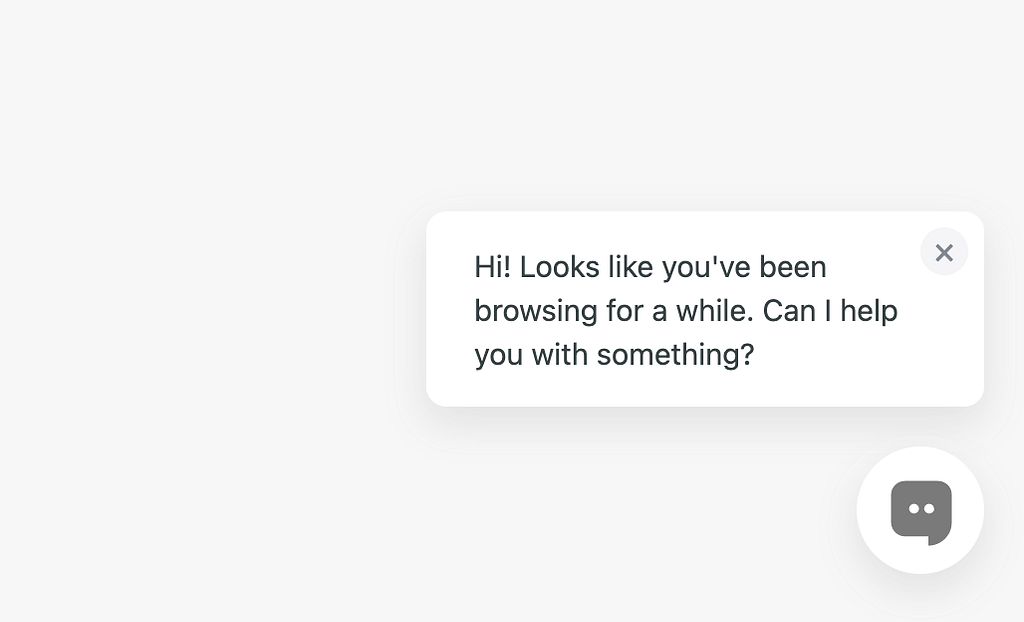
It is good from a beginner’s point of view. However, there is a lot that can be improved.
Now, look at this live chat button from the marketing automation platform 13chats.com:
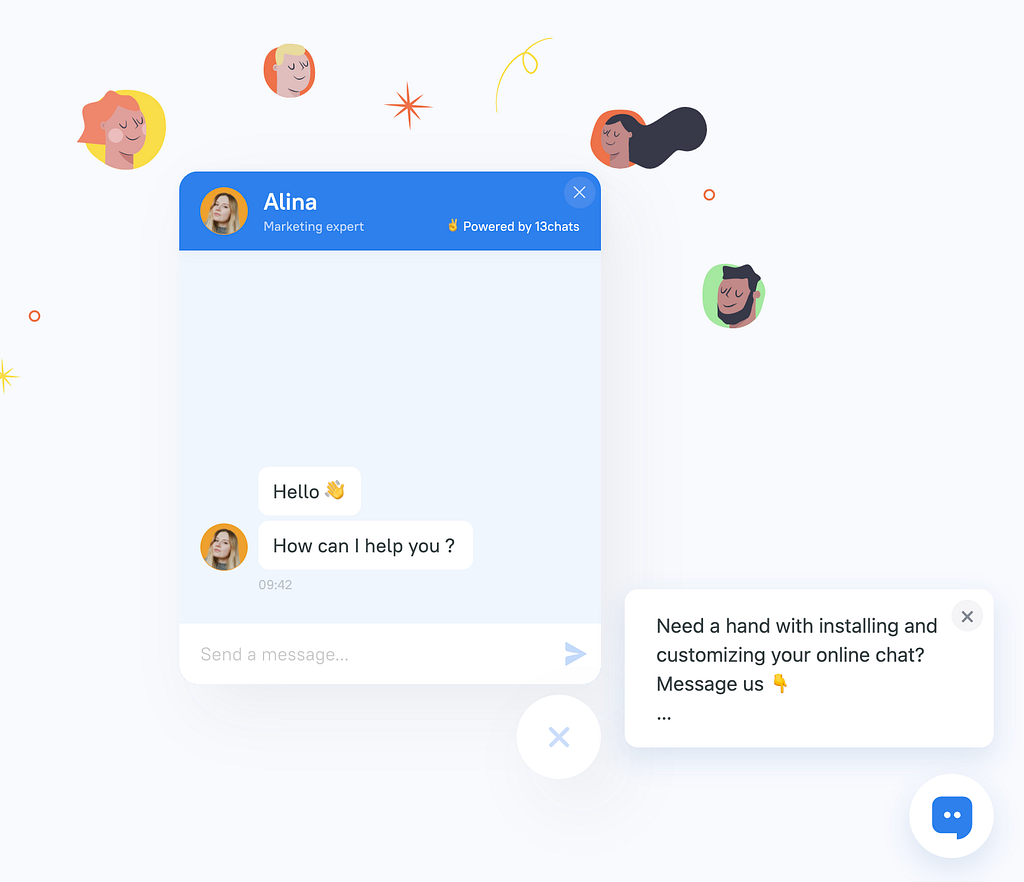
You see the difference. Even if the chat is closed, we have a caption that is hard to ignore. Just a simple trick and your conversions will see significant improvements.
These little tactics can make a huge difference in sales conversions. Visitors can feel more welcomed and have a good impression of your business right from the beginning. The chances of them buying products or services from you also increase.
Your chat support team is the backbone of your live chat system. If they are not adequately trained, chances are you will miss out on a lot of opportunities that live chats have to offer.
First, you need to understand how critical it is to have a good chat support team. Customers will not remember the chat software you use. Instead, they will remember their interaction with your chat representative. In simple words, great live chat representatives have the power to single-handedly boost sales conversions.
So, it is essential to adequately train your chat support staff. Your live chat representatives should be able to understand your customers’ problems, speak their language, and provide meaningful support. They should also be flexible enough to identify how customers speak and successfully adapt to the customer’s tone without any difficulty. All of these things are only possible with training and practice.
It takes a lot to build a live chat system. Not only do you have to create a powerful chatbot, but you must also establish chatbot protocols and modify them as needed.
Here are a few steps for establishing a seamless chat protocol:
Following these steps will ensure that you are prepared for any situation, have a clear goal in mind, and are ready for whatever it takes for a successful conversion. This is one thing that will make you stand out among your peers and establish you as a brand that prioritizes customer satisfaction over anything else.
While the popularity of live chat is on the rise, there are still some businesses that do not want to use it because they find it very complicated. However, the benefits live chat offers are something you will not find anywhere else. It can almost double your conversion rates and cut your costs by half. So, there is no reason why you should not use it.
Here is how to get started if you are making up your mind for using live chat in your sales process:
Find an ideal live chat solution that offers a wide range of customization options and customize it to suit your business needs. The next step is to implement the knowledge we shared above and then see the results for yourself.
Also, do not forget to share your experience with us in the comments. We are excited to hear from you.


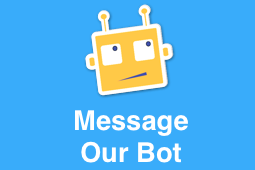
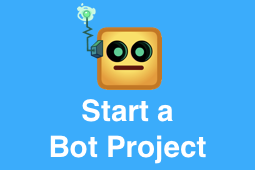
How Live Chat Increases Sales Conversions was originally published in Chatbots Life on Medium, where people are continuing the conversation by highlighting and responding to this story.
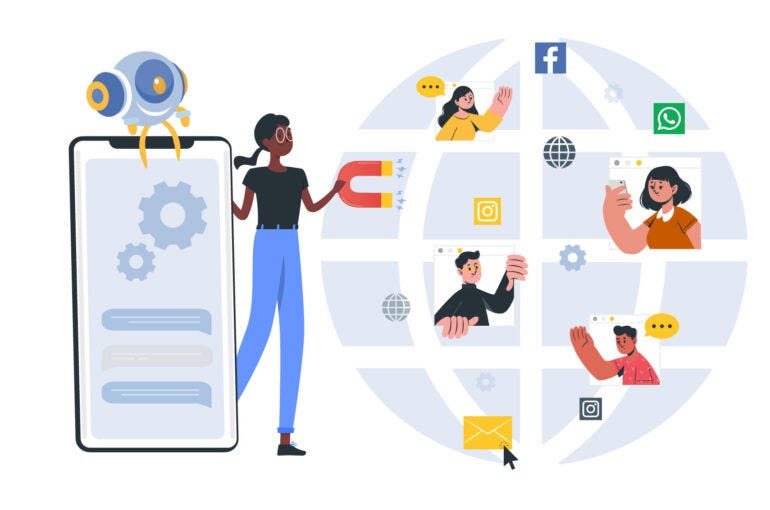
Have you reached a point where you don’t know how to increase your commercial leads? Do you need a practical, low-cost solution? Then you are in the right place. Find out how AI chatbots can help you meet your goals!
Lead generation is a term widely used in the marketing area. This concept refers to the brand’s advertising to gather people interested in their products or services and make them customers. According to an eMarketer study, the marketing tactic most used to generate leads is email marketing.
Other valuable strategies to reach potential customers are content marketing (blog), SEO (website optimization so that it appears in search engines), social networks, and events.
To generate leads consistently, it’s necessary to create and manage a funnel.
A lead generation funnel, also known as a lead funnel, is a strategy that follows this same shape. It aims to funnel your target audience, going through several phases until (hopefully!) the purchase.
The lead funnels stages are:
At the top of the funnel, it’s where you promote your brand. It’s the first step to count the potential customers.
In the second phase, in the middle of the funnel, potential customers start to communicate with you. It’s essential to create and maintain relationships with stakeholders.
In the third and last phase, you already have a founded relationship with those interested. There’s trust on potential clients’ part, and it’s only necessary a little push to complete the sale.

In short, a chatbot is a virtual agent that helps optimize communication processes between companies and individuals. It can be present in various digital contact channels such as the website, Facebook Messenger, WhatsApp, etc.
Chatbots can assist in internal corporate processes, such as Human Resources, or streamline other departments like your company’s Customer Service.
Go to Chatbots for Human Resources: Uses and Advantages to learn more.
Only Chatbots with Artificial Intelligence can understand and produce human language. This understanding is possible due to technologies such as Machine Learning and NLP, which correspond to natural language processing.
We emphasize this because there are chatbots that don’t have AI. In these cases, communication isn’t possible without decision trees. That is, users choose the option through buttons or keywords that best suit their needs.
Well, an AI chatbot can be a great way to generate leads.
By logic, the users in your chatbot are already your customers or are trying to know more about your products.
Therefore, once they are already in contact with you, you can, with the chatbot, collect the data of those users.
With that data, you can have access to a lot of information. For example, what age group they are in, what product they are looking for, etc.
From there, you can send specific campaigns to those same potential customers.
You can do these campaigns through Broadcasts and Triggers. To learn more, click here.
Following the mentioned theory, if the chatbot is in the TOFU phase of the funnel, the campaigns are the MOFU, and the customer’s adherence to its service is BOFU.
1. How Chatbots and Email Marketing Integration Can Help Your Business
As we have seen, AI chatbots are a great way to get in touch with your customers and prospects.
They are quick to answer and efficient in solving the questions asked. Still, there are many other benefits to using chatbots as a lead generation strategy.
Offer a form of contact that is always available.
Your potential customers do not have an appointment to talk to you. They may be interested at that time and, if they don’t get an answer, quit.
With a chatbot, you can collect information from users, such as demographic data, age, interests, etc.
With this data, you can segment your potential customers and send them relevant campaigns in which the user recognizes that they are suitable for him/her.
There is nothing more boring than receiving a message that has nothing to do with us!
An example of process automation is the sending of messages.
You don’t need to have a team assigned to that function. Define the groups, the messages you want to send, the date and time, and the bot automatically send the information under the conditions you determined.
The same happens for processes such as customer segmentation. To do this, define the group and the parameters of this group. After that, the message it’s automatically sent to all the individuals that meet the set requirements.
Cost reduction is one of the biggest headaches for companies.
How do we increase our services without having to increase the value of investments?
Well, a chatbot is THE answer to that question.
Besides being a way to expand its digital contact channels, it reaches a broader range of potential customers with a more digital profile.
The answer is: of course! That’s the goal! To reach a larger audience and translate it into clients.
Not all the people you reach will indeed become consumers of your product. However, it will increase the acquisition rate.
The more people you reach, the more possibilities you have to make money.
It’s, without a doubt, an investment that in the long term brings results!
In parallel, something handy that Visor.ai provides is the chance to have human agents associated with your chatbot.
Through Live Chat, your Customer Support team can:
Adopting this set of services — human and virtual — increases the level of service it offers.
It also increases the efficiency of response, improves the relationship with your customers and potential customers, and increases customer satisfaction.




How to Increase Lead Generation with AI Chatbots was originally published in Chatbots Life on Medium, where people are continuing the conversation by highlighting and responding to this story.

Thousand unique readings of Chatbot Report 2019: Global Trends and Analysis prompted us that such materials are in demand — and therefore we are pleased to submit an updated Chatbot Trends Report 2021.
For several years chatbots were typically used in customer service environments but are now being used in a variety of other roles within enterprises to improve customer experience and business efficiencies. Known by a variety of different names such as a
conversational AI bot, AI assistant, intelligent virtual assistant, virtual customer assistant, digital assistant, conversational agent, virtual agent, conversational interface and more, chatbots are growing in popularity. But just as chatbots have a variety of different names, they also have varying degrees of intelligence.

Which of our predictions did come true? COVID-19 became a catalyst for business transformation: 76% of businesses plan on long-term IT changes. Conversational AI Market According to a new update to the International Data Corporation (IDC) Worldwide Semiannual Cognitive Artificial Intelligence Systems Spending Guide, spending on cognitive and AI systems will reach $77.6 billion in 2022, more than three times the $24.0 billion forecast for 2018. The compound annual growth rate (CAGR) for the 2017–2022 forecast period will be 37.3%.
Software will be both the largest and fastest growing technology category throughout the forecast, representing around 40% of all cognitive/AI spending with a five-year CAGR of 43.1%. Two areas of focus for these investments are conversational AI applications (e.g., personal assistants and chatbots) and deep learning and machine learning applications (employed in a wide range of use cases). North America is expected to hold the largest market size in the global conversational AI software market, while Asia Pacific (APAC) is expected to grow at the highest CAGR during the forecast period. North America is expected to be the leading region in terms of adopting and developing conversational AI. Growing investments in AI and ML technologies, presence of maximum number of conversational AI vendors, and increasing government spending on AI-based technologies are expected to contribute to the market growth during the forecast period. (Markets and Markets)
1. How Chatbots and Email Marketing Integration Can Help Your Business
The chatbot market is expected to grow by USD 1.11 billion, progressing at a CAGR of almost 29% during the forecast period. According to the Technavio report, the market will not be majorly impacted due to the spread of the COVID-19 pandemic. Insider Intelligence estimates that up to 73% of healthcare admin tasks could be automated by AI, and the adoption of chatbots could save the healthcare, banking, and retail sectors $11 billion annually by 2023. According to Lauren Foye, by 2022, banks can automate up to 90% of their customer interaction using chatbots. A new study from Juniper Research has found that the operational cost savings from using chatbots in banking
will reach $7.3 billion globally by 2023, up from an estimated $209 million in 2019.
As more businesses and consumers use chatbots, the more demand will exist for better development of chatbots, thus making it easier for companies to implement them within their business.
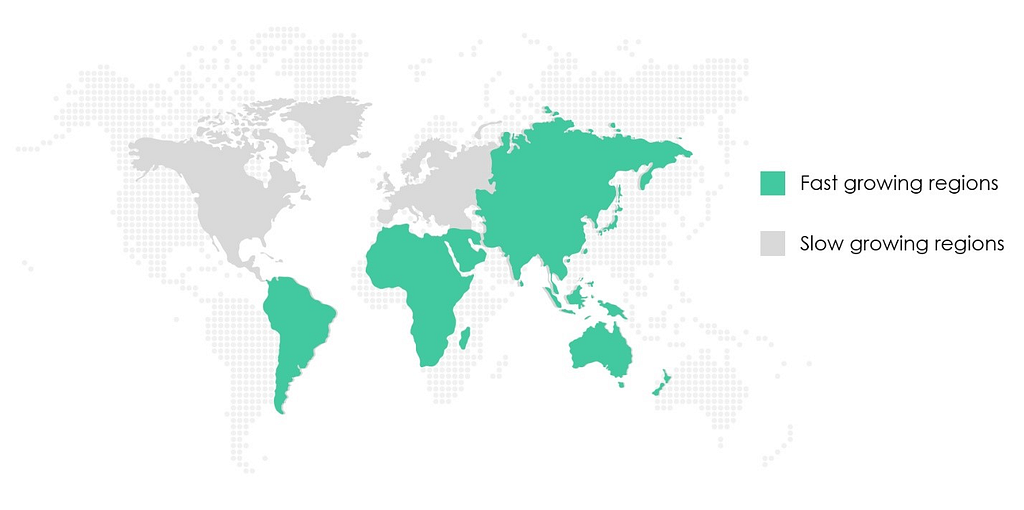
The rising popularity of live chats as an effective method of customer engagement and the increasing adoption of chatbot technologies to provide enhanced customer service is opening several new opportunities for market vendors.
According to Markets and Markets, the global conversational AI market size is expected to grow from USD 4.2 billion in 2019 to USD 15.7 billion by 2024, at a Compound Annual Growth Rate (CAGR) of 30.2%. Intelligent Virtual Assistants (IVA) and chatbots are the 2 segment types in the conversational AI market report.
The Chatbots segment will hold a larger market size during the forecast period. Research and Markets states that the Chatbots Market was worth USD 1.2 billion in 2018 and is projected to reach USD 7.5 billion by 2024 registering a CAGR of 34.75% over the period. The chatbots segment is estimated to hold a larger market size, owing to the increasing demand for AI-powered chatbots to analyze customer insights in real time.
PSFK says that 74% of consumers prefer chatbots when they’re looking for instant answers. With companies that use chatbots in retail seen as efficient (47%), innovative (40%) and helpful (36%).
Chatbot Adoption Growth Expected Across All Industries
The AI-based chatbots can be used by the enterprises to understand user behavior, purchasing habits, and preference over time and accordingly can answer queries.
The major factors fueling the market growth include the increasing demand for AI powered customer support services and omni-channel deployment, and reduced chatbot development costs.
Besides, organizations across various industry verticals are increasingly adopting AI to make more informed decisions. Many such factors will foster market growth over the forecast period.
The advantages of chatbots over other customer support options are one of the major factors propelling the market growth. Chatbots can be integrated into various channels such as websites, email, SMS, or messaging applications through which users interact. They collect consumer data from support interactions and databases and provide a personalized experience to the customer.
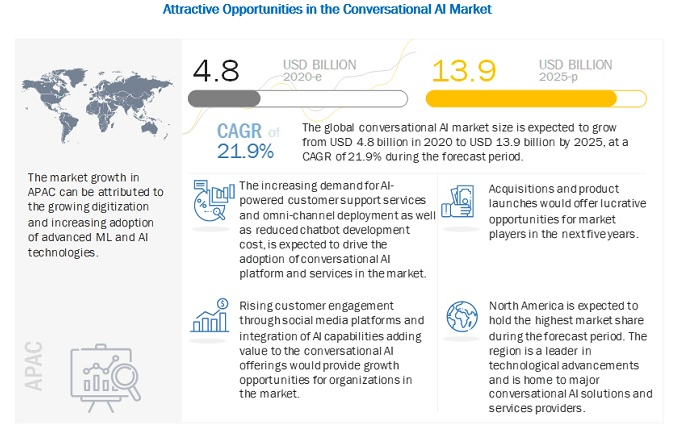
Also, they can recognize human emotions such as anger, confusion, fear, and joy. Many such advantages are increasing the adoption of chatbots among businesses, which is driving market growth. However, factors such as lack of awareness and standardization will hamper market growth.
Consumer retail spend over chatbots will reach $142 billion by 2024; rising from $2.8 billion in 2019. This represents average annual growth of 400 per cent over the next four years, according to a new report from Juniper Research.
The research identified the retail sector as a key beneficiary of advances in NLU (Natural Language Understanding) technologies. It forecast that NLU would be essential in providing a seamless retail experience for users and to establish chatbots as a reliable retail channel as it enables chatbots to efficiently process human inputs and produce more accurate automated responses to users.
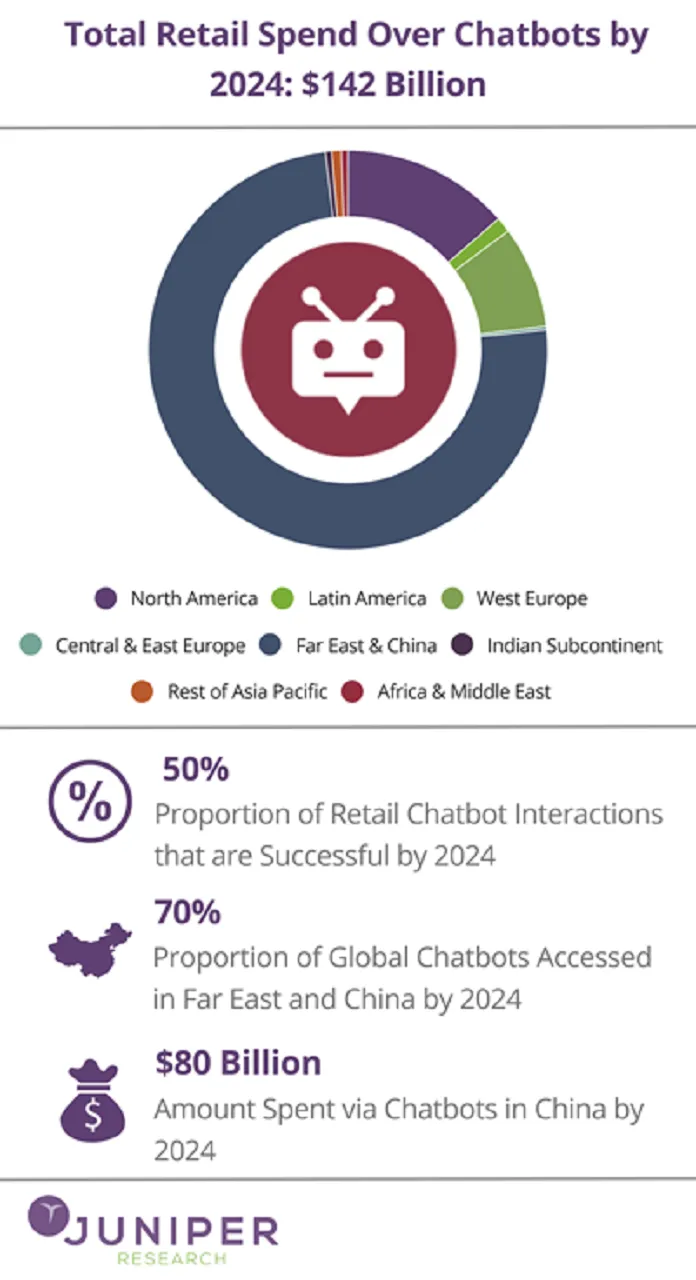
The new research, Chatbots: Vendor Opportunities & Market Forecasts 2020–2024, forecasts that advances in NLU capabilities will drive the effectiveness of chatbots. It anticipates that over 50 per cent of retail chatbot interactions will be completed successfully by 2024, without the need for human intervention.
As a result, the research urges retailers to implement chatbots as part of a wider omnichannel retail strategy in order to maximize their presence on a number of key retail channels.
Additionally, the research found that 80 percent of global consumer spend over chatbots will be attributable to discrete chatbots by 2024. These are embedded directly into a retailer’s mobile app, rather than accessed via a browser or messaging application.
The research anticipates that control over development and the ability to retain company branding will drive discrete chatbots to become the most popular chatbot medium in retail.
The report also forecast 70 percent of the global number of chatbots accessed by 2024 would be attributable to Far East & China. Furthermore, over $80 billion will be spent via chatbots in China in 2024; accounting for over 55 per cent of global chatbot spend in that year.
The research, however, highlighted that this will still only be around 4 percent of total mobile and online spend on digital and physical goods in the region.
2019 only five percent of customer interactions with contact centers globally are powered by AI technologies, but Gartner estimates that by 2021 this will rise to nearly one in six. Fortunately, government agencies have access to a new generation of AI-enabled chatbots, capable of detecting caller intent and responding to the root causes of customer inquiries, considerably reducing call volumes.

According to an April 2019 survey from Forrester Consulting, 89 percent of customer service decision makers in North America believe chatbots and virtual agents are useful technologies for personalizing customer interactions. But problems arise when the capabilities that chatbot vendors promise to deliver just aren’t there or require too much involvement from internal IT teams.
During 2021, more than 50% of enterprises will spend more per annum on bots and chatbot creation than traditional mobile app development (Gartner).
Forrester says that a typical request for proposal (RFP) doesn’t work for conversational AI. In his opinion, it’s almost impossible to differentiate between the products on paper. Forrester recommends carrying out proof of concepts to evaluate conversational AI chatbot development tools. Data shows that chatbot usage and engagement is on the rise.
Today, only five percent of customer interactions with contact centers globally are powered by AI technologies, but Gartner estimates that by 2021 this will rise to nearly one in six. Fortunately, businesses have access to a new generation of AI-enabled chatbots, capable of detecting caller intent and responding to the root causes of customer inquiries, considerably reducing call volumes.
To secure the benefits of AI, businesses need to consider more than just the technological capabilities of the AI tool they want to deploy. They must ensure that technology enhancements go hand-in-hand with developing people and creating new organizational processes to support AI-powered services. Only then will they be able to improve the overall experience and reap the rewards of greater operational efficiency.
AI Chatbots 2021 and beyond
2022
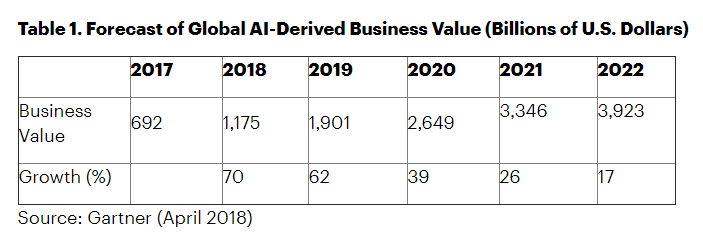
2023
2024
2025
2026
It’s clear that chatbots are here to stay. As the market matures, only the intelligent and capable conversational AI chatbot platforms will remain. BRN.AI platform will transfer your Industry Expertise in AI Business for exponential scale.




Chatbot Trends Report 2021 was originally published in Chatbots Life on Medium, where people are continuing the conversation by highlighting and responding to this story.
Intranet in today’s world is a one-stop-shop for sharing, communicating, collaborating, supporting employee needs in an organization. Employees get more involved and engaged with business tasks when information is easily accessible. The information overload or scattered data in the knowledge/database lowers the engagement and productivity rate.
A powerful conversational chatbot integrated within the intranet system creates an engaging and highly scalable next-generation intranet that boosts collaboration. It enriches employee and customer experiences through a unique combination of conversational and digital user interfaces. With the intuitive UI and a handful of options at a click, chatbot simplifies the usability of the intranet, magnifying the employee experience.
Learn more here – https://meshintranet.com/sharepoint-intranet-chatbots/
submitted by /u/Sri_Chaitanya
[link] [comments]
Emotions are important part of human conversation but chatbots kind of suck at it. What can we do to improve it? This post describes how…
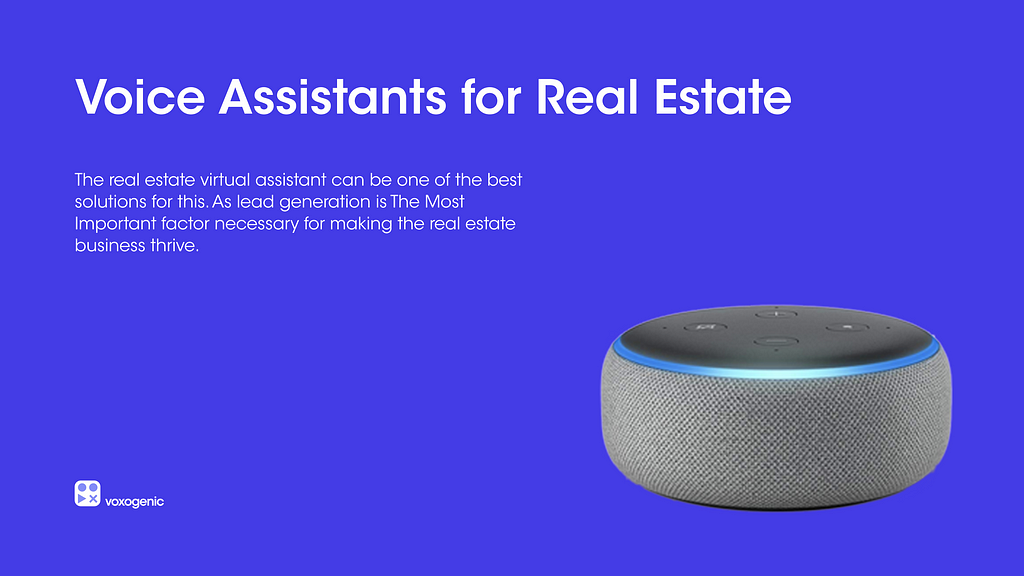
Are you eagerly searching for ways to enhance the profitability and productivity of your business? The real estate virtual assistant can be one of the best solutions for this. As lead generation is The Most Important factor necessary for making the real estate business thrive.
An online real estate assistant can play a pivotal role in the growth of the real estate business. Real Estate has traditionally been a viable avenue for investment. To bridge the transition from the way real estate business is being handled, it only made sense to come up with a voice assistant for the same.
Read along till the end find out about many other different ways by which they can help your real estate business.

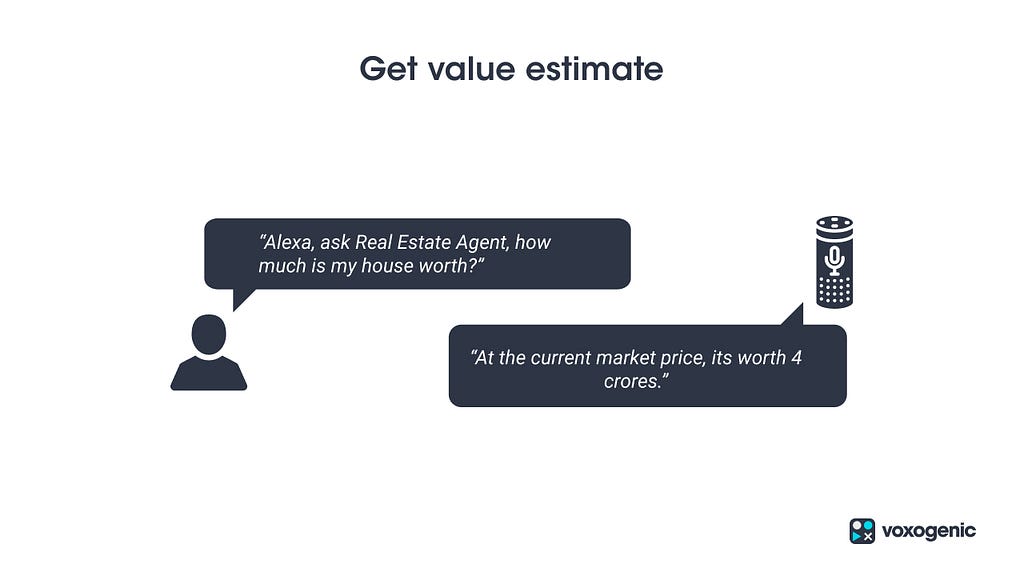
The users can stay updated with real-time value estimates of their property. They will also have an option to get value estimation of upcoming properties, in a few easy steps.
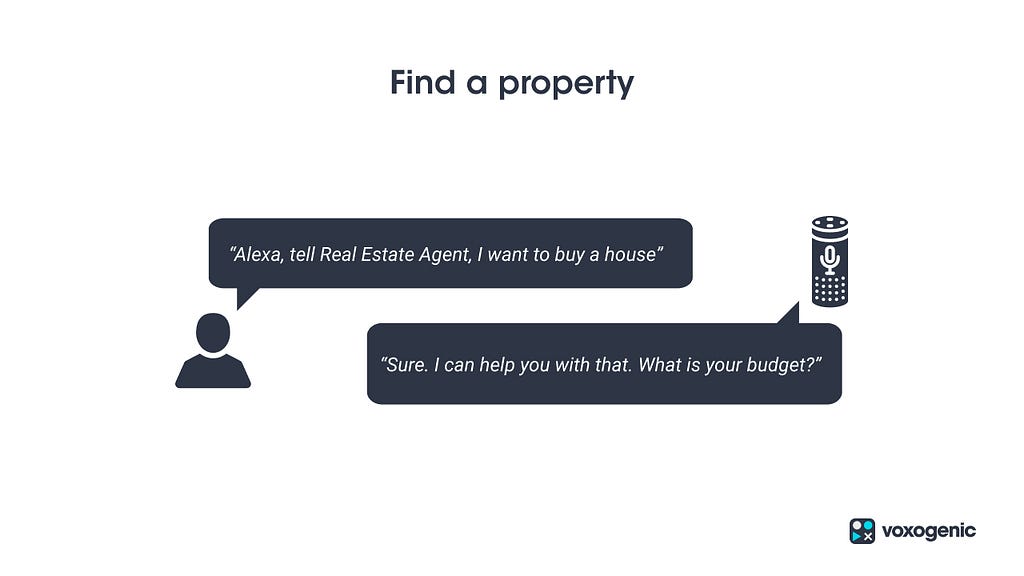
Finding a new property to invest in is hardly an easy task. A voice assistant can help ease the process by asking some rudimentary questions, which will then allow the assistant to find the best property according to your needs. The details of a particular proper can later be shared via email, S.M.S., or by voice.

Users will have the option to search for properties available for rent through a single command or a guided conversational mechanism. They will be given customized results in both cases.
1. How Chatbots and Email Marketing Integration Can Help Your Business
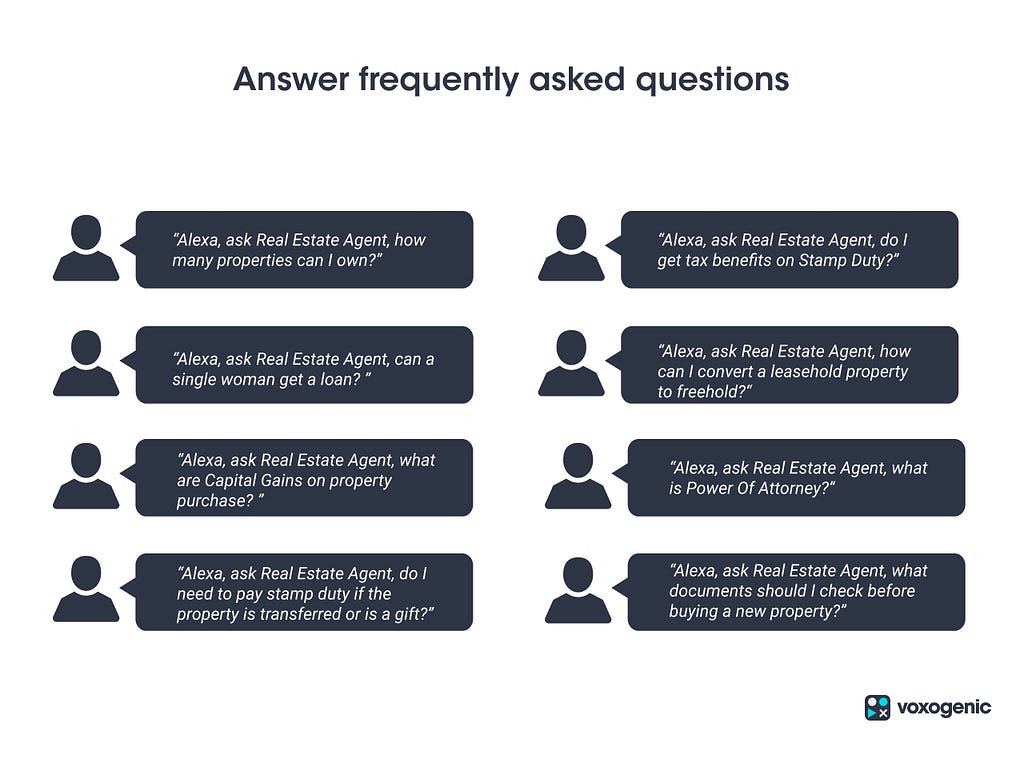
As we have established before that inquiry into real estate is never an easy task, users will have a varying result of unique questions. For this purpose, we will have the voice assistant act as an information hub for real estate-related questions.
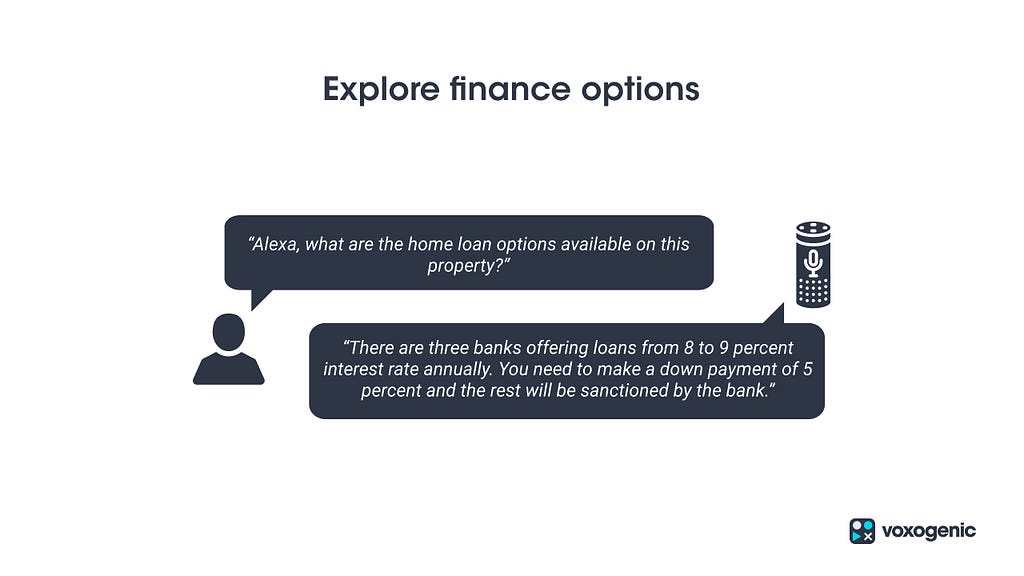
Users will now not worry about checking for loan options on the property. They can now directly look for options through the voice assistant which will help the users connect directly with the bank representatives (to help understand the process.)
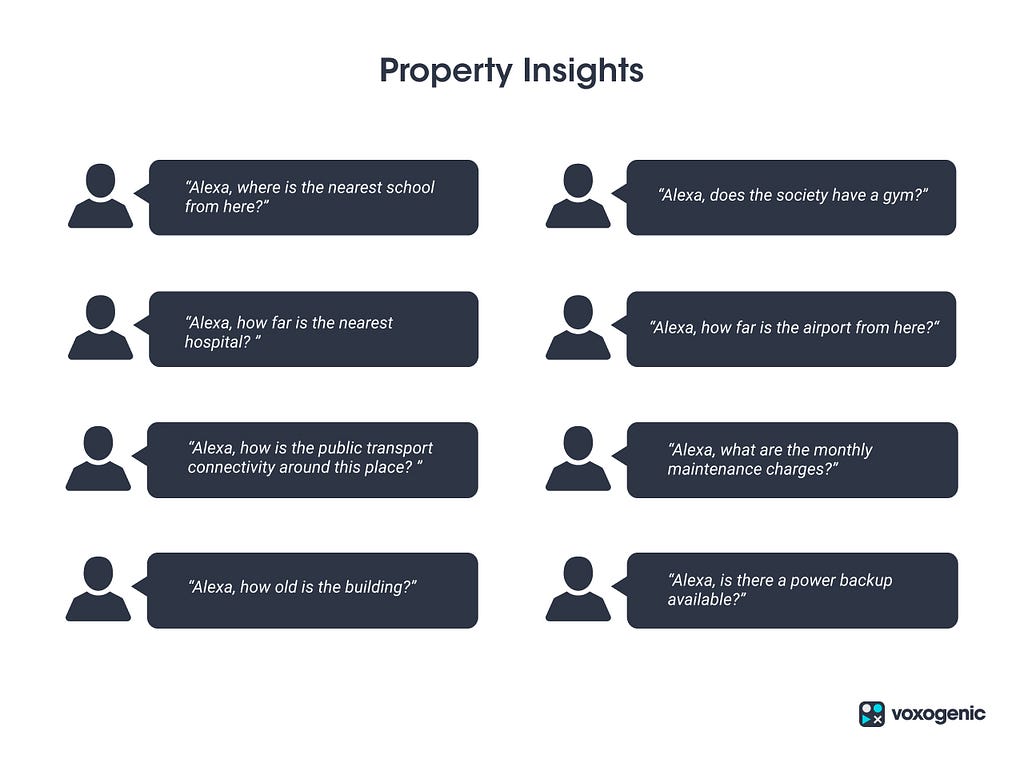
Users can now get more streamlined information about a particular property.
Voxogenic Is A Dedicated Voice Assistant Agency That Can Offer Property Builders, Brokers, Real Estate Investors The Full-Fledged Support Of Real Estate Voice Assistants And Enhance Their Productivity.
If you would like to know more, please contact us at voxogenic.com or drop us an email at contact@voxoegnic.com We look forward to hearing from you.




Voice Assistant Use Case
Real Estate was originally published in Chatbots Life on Medium, where people are continuing the conversation by highlighting and responding to this story.